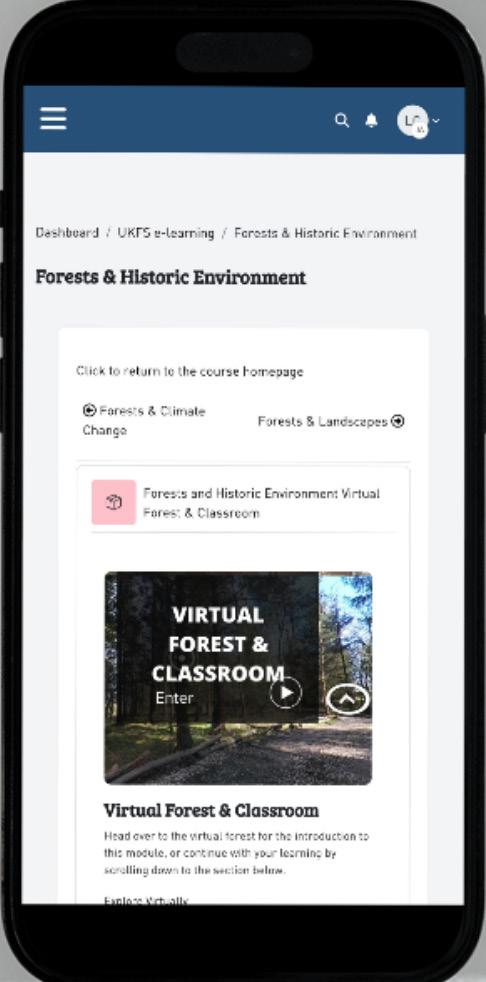
7 minute read
LOST IN THE WOODS
Empica PR’s Natalie Birrell helps us navigate the world of e-learning PR & Marketing
Going live on a new e-learning programme is hugely exciting for everyone involved. This is the moment when you get to revel in the finished product and reflect on the journey you’ve been on. Invariably there will have been bumps in the road, the occasional pothole, detours and diversions, but you got there in the end and feel justifiably proud of all that’s been achieved!
Fast forward a bit and the mood has dipped. Why isn’t everyone talking about your fantastic new course? Where are all those e-learners – and why haven’t they signed up?

Could it be down to a lack of PR and marketing?
More often than not, this is just an oversight. Let’s face it, most e-learning programmes are conceived by educators and HR practitioners, and developed in partnership with technical wizards and authors, who don’t usually have to think about PR and marketing as part of their day jobs.
Unfortunately, there is no way around it if you want to raise awareness, generate interest, and get people to register.
Seeing the wood for the trees
The Institute of Chartered Foresters (ICF) is the Royal Chartered body for tree professionals in the UK. They worked closely with AdaptiVLE to create a dedicated online educational platform, called Silvestor, for foresters and arboriculturists looking to develop their skills and achieve qualifications as part of their continuing professional development.
With this in place, the ICF then worked with AdaptiVLE, sector specialists and technical authors to turn the lengthy, text-based UK Forestry Standard (UKFS) into a highly interactive e-learning programme. They wanted it to be visually appealing and engaging, with graphics, quizzes and virtual reality elements designed to bring the latest edition of the Standard to life while providing tree professionals with an alternative way to assimilate the best practice principles and guidelines.
The ICF grasped the importance of PR and marketing at an early stage and engaged Empica to work alongside their in-house marketing team to generate awareness of the new UKFS e-learning programme, highlight its benefits, and encourage foresters and arboriculturists to sign-up.
There were three stages to the strategy:
1. Planning and partnerships
The first step was to get ‘under the bonnet’ of the project, to understand how and why the e-learning programme was conceived and the problems it set out to solve.
Once we had a grasp of the context, we moved on to the target audiences – who they were, where they were based, and the types of roles they were working in. This led to a segmentation of these audiences and an exploration of the reasons why they might be interested in the UKFS e-learning programme and which elements were most likely to appeal to them.
These insights enabled us to develop the core narrative, clearly setting out what we wanted to communicate, the key messages to emphasise, and the actions we wanted people to take.
The UKFS is the technical standard for managing forests throughout the UK and the Government-owned forestry bodies in England, Scotland, Wales and Northern Ireland had given their input and backing for the programme. There was a real opportunity to collaborate and get them involved in promoting the project.

With the help of the ICF’s project coordinator, we developed links with the communications teams at all partner organisations and discussed our plans for promoting the new e-learning programme at an early stage. This enabled them to help shape the strategy and ensured their buy-in from the start.
We also forged links with Lantra, which specialises in training and qualifications to enhance careers in the land-based and environmental sectors across the UK, as they were providing the accreditation.
Developing these relationships and a strong communications network was fundamental to the PR strategy.
2. Launch
In the build up to the launch, we worked with all partners and stakeholders to agree what might be possible. This included open conversations about their roles in helping to communicate and market the e-learning programme to their staff and members, using their own internal and external communications channels, such as e-newsletters, magazines, website, intranet and social media. We also looked at forthcoming conferences, seminars and other events to identify additional opportunities to promote the programme.
With these arrangements in place, we set about developing a communications toolkit with all the assets and resources needed to ensure clear and consistent messaging and calls to action. The toolkit included logos and brand guidelines, a launch press release, key communication messages, a list of benefits, screengrabs, photos and video clips, as well as endorsement quotes from various partners and stakeholders.
While we handled the core launch activities, using the forestry trade media in print and online, and the ICF’s social media, e-newsletter, membership magazine and website – the partners used their own communication channels to spread the word even further, providing endorsement and credibility to the e-learning programme.
This collaborative approach led to widespread coverage, driving thousands of people to the home page and resulting in hundreds of registrations over the weeks and months that followed.
3. Ongoing promotion
Once the launch was over, we knew we had to continue to promote the UKFS e-learning programme and encourage as many tree professionals as possible to engage with the Standard and grow the number of registrations.
The key was to find new ways of getting the messages out there and that meant looking for different things to talk about. We began by exploring various milestones and the people who had enrolled on the programme so far. How many people had signed up?
What feedback had they given? Who could be approached for testimonials or case studies?
We wanted to showcase the diversity of people and roles that were benefitting from the e-learning programme, allowing them to explain in their own words what they were getting out of it. We also wanted to emphasise the most enjoyable or novel elements of the programme, recognising that people learn in different ways. Some would want to find out more about the VR capabilities while others would be more impressed by the breakdown of information into bite-size chunks and the ease with which they would be able to access the guidance remotely.
We also used quiz questions from the course as teasers and to give them a greater insight.
We continued to work closely with our partners, using their communication channels as much as possible, to amplify our efforts.
A few takeaways
PR and marketing have an important role to play in the development and launch of any e-learning programme. Here are a few useful pointers:
Get your PR or marketing specialist involved at an early stage as they will ask interesting and thought-provoking questions that you may not have thought of, which may influence some of the development decisions.
Consider what data would be useful and make sure you capture it as part of the registration process; you will almost certainly want to analyse e-learner personas at a later date and you may even want to incorporate permissions so that you can contact them afterwards.
Consider in advance how you might want to evaluate the success of your marketing and make sure the right metrics are in place to allow you to analyse visitor numbers and registrations in a useful way.
Make sure the narrative on the e-learning home page reflects the descriptions and messaging in any press releases and marketing to provide reassurance and credibility; all branding and communications need to be consistent.
Identify stakeholders and partners who may be willing to help amplify and enhance your promotional campaign.
Explore all relevant communication channels –owned, earned, bought and shared – and use a variety of tactics to help you achieve your goals.
Give careful thought to the timing of your launch and any external factors that may limit its success.
Put resources and processes in place to support the PR and marketing effort.
Incorporate a realistic marketing budget into your overall project costs at the start, so there isn’t a last-minute scramble for funds.
Natalie Birrell is managing director at Empica – a PR and content creation agency with a 35-year track record of helping organisations to enhance their reputations and build trust, promote their products and services in a credible and compelling way, and communicate more effectively.
Connect wth her here: https://www.linkedin.com/in/natalie-birrell-41808411/

